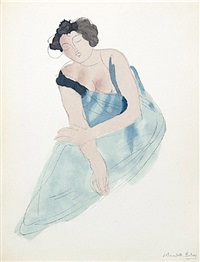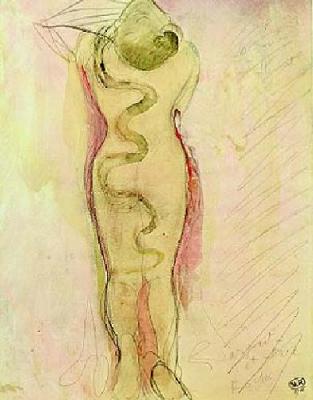Auguste Rodin
François-Auguste-René Rodin (12 November 1840 – 17 November 1917), known as Auguste Rodin (/oʊˈɡuːst roʊˈdæn/ oh-GOOST roh-DAN; French: [oɡyst ʁɔdɛ̃]), was a French sculptor. Although Rodin is generally considered the progenitor of modern sculpture, he did not set out to rebel against the past. He was schooled traditionally, took a craftsman-like approach to his work, and desired academic recognition, although he was never accepted into Paris's foremost school of art. Sculpturally, Rodin possessed a unique ability to model a complex, turbulent, deeply pocketed surface in clay.
Many of his most notable sculptures were roundly criticized during his
lifetime. They clashed with the predominant figure sculpture tradition,
in which works were decorative, formulaic, or highly thematic. Rodin's
most original work departed from traditional themes of mythology and allegory,
modeled the human body with realism, and celebrated individual
character and physicality. Rodin was sensitive to the controversy
surrounding his work, but refused to change his style. Successive works
brought increasing favor from the government and the artistic community.
Sculpturally, Rodin possessed a unique ability to model a complex, turbulent, deeply pocketed surface in clay.
Many of his most notable sculptures were roundly criticized during his
lifetime. They clashed with the predominant figure sculpture tradition,
in which works were decorative, formulaic, or highly thematic. Rodin's
most original work departed from traditional themes of mythology and allegory,
modeled the human body with realism, and celebrated individual
character and physicality. Rodin was sensitive to the controversy
surrounding his work, but refused to change his style. Successive works
brought increasing favor from the government and the artistic community.From the unexpected realism of his first major figure – inspired by his 1875 trip to Italy – to the unconventional memorials whose commissions he later sought, Rodin's reputation grew, such that he became the preeminent French sculptor of his time. By 1900, he was a world-renowned artist. Wealthy private clients sought Rodin's work after his World's Fair exhibit, and he kept company with a variety of high-profile intellectuals and artists. He married his lifelong companion, Rose Beuret, in the last year of both their lives. His sculptures suffered a decline in popularity after his death in 1917, but within a few decades, his legacy solidified. Rodin remains one of the few sculptors widely known outside the visual arts community.
Source: Wikipedia






